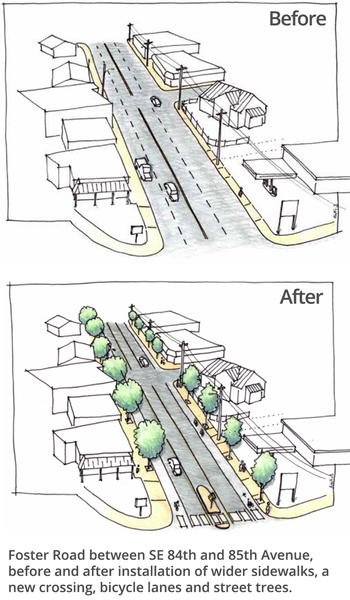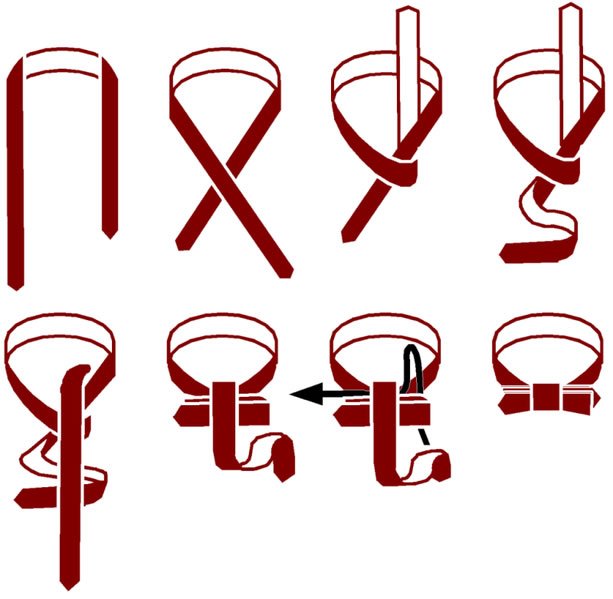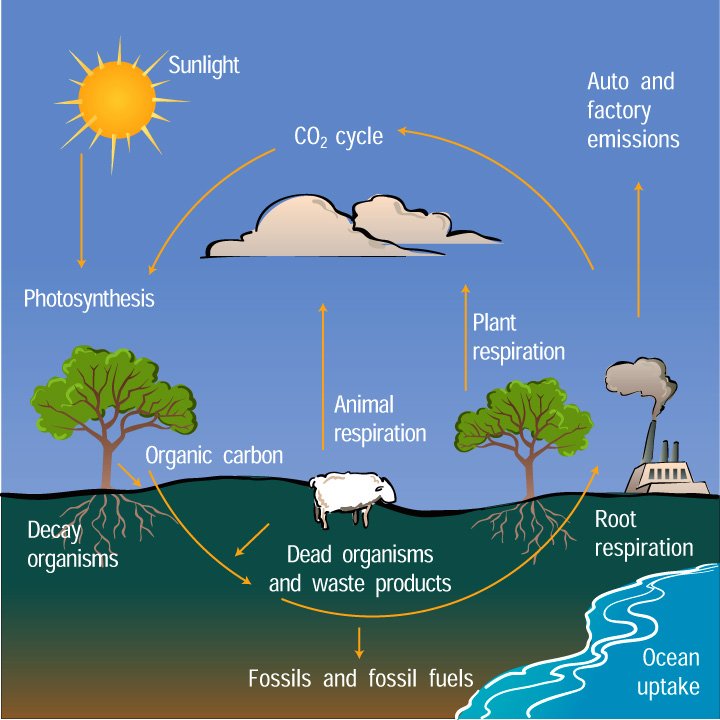IELTS Writing Task 1: Question
A map diagram in IELTS Writing Task 1 is likely to be a before/after street plan that requires you to compare past and present. In this case, however, it’s present and future that you need to compare.
The diagram shows proposed changes to Foster Road.
Write a 150-word report describing the proposed changes for a local committee.
IELTS Writing Task 1: Model Answer
The diagram shows proposals to transform Foster Road between SE 84th and 85th Avenue into a tree-lined avenue that is safer for pedestrians and cyclists.
First of all, the planners propose to widen the sidewalk on both sides of the road and add bicycle lanes. This will mean reducing the number of lanes for cars and other vehicles. A pedestrian crossing will also be installed at the lower end of the street, near the gas station. This crossing will include an island in the middle where people can wait in safety.
In addition to the safety measures above, planners also want to plant trees along both sides of the road. These trees will transform the appearance of the neighbourhood as well as provide vital extra shade for pedestrians.
To summarise, under these proposals, the needs of local residents will be better served by making Foster Road a safer and more pleasant environment.
(152 words, IELTS 9.0)
Why does this Task 1 answer get an IELTS Band 9 score?
Task achievement: The candidate writes at least 150 words and describes all of the proposed changes. The changes are summarised at the beginning and end, and described in detail in the body of the report. The changes are connected to their function and their location on the map is also clearly described.
Coherence and cohesion: The body of the report is divided into two paragraphs, one describing the changes that will improve safety, and another describing changes that will improve the environment. These paragraphs are clearly linked (“In addition to the safety measures above,…”). There are several uses of reference links such as this and these to refer back to a previous sentence.
Lexical resource: The candidate introduces relevant vocabulary not on the original maps such as pedestrian, cyclist, measures, and tree-lined. The candidate transforms certain words as in proposed > proposal and installation > installed. There are no spelling mistakes.
Grammatical range and accuracy: The model answer includes a range of complex sentence structures. Tense is always used correctly to show that the changes will occur in the future. There are no grammatical errors.
Teacher’s Notes
 When describing changes to a map in IELTS Writing Task 1, you will usually start by comparing the diagrams, identify four or five changes that seem important, and write about these. But it’s worth taking 1-2 minutes first to reflect on why the changes are significant and if there is a common theme or themes. Being able to identify a common theme or tendency is one way to get a high score for Task Achievement.
When describing changes to a map in IELTS Writing Task 1, you will usually start by comparing the diagrams, identify four or five changes that seem important, and write about these. But it’s worth taking 1-2 minutes first to reflect on why the changes are significant and if there is a common theme or themes. Being able to identify a common theme or tendency is one way to get a high score for Task Achievement.











